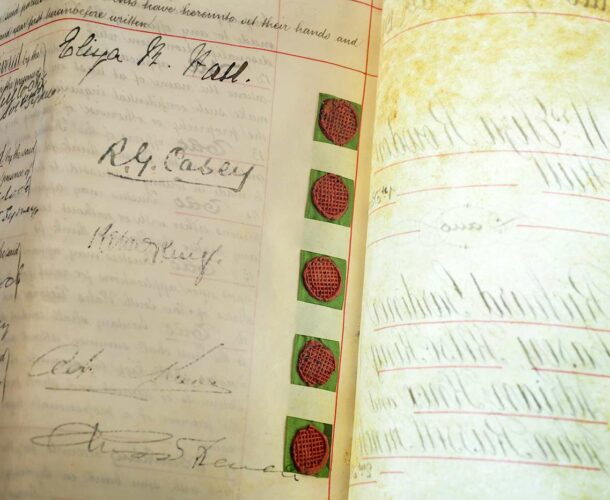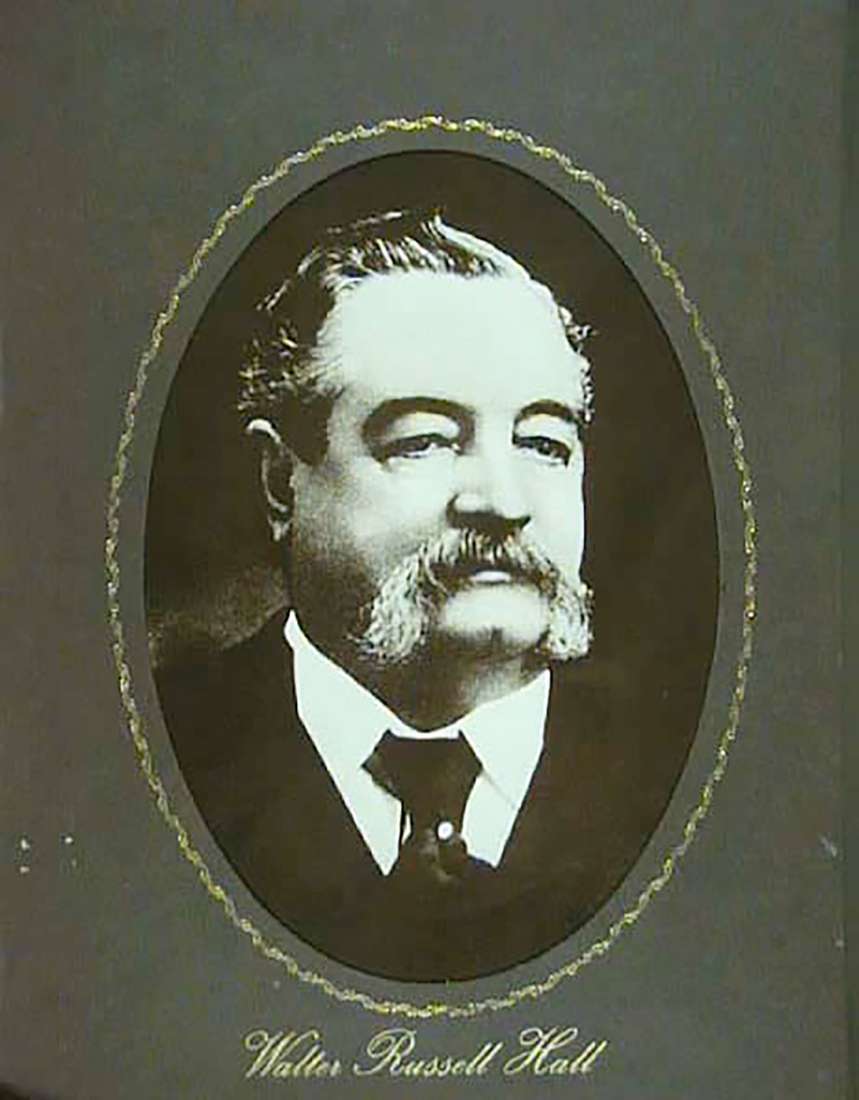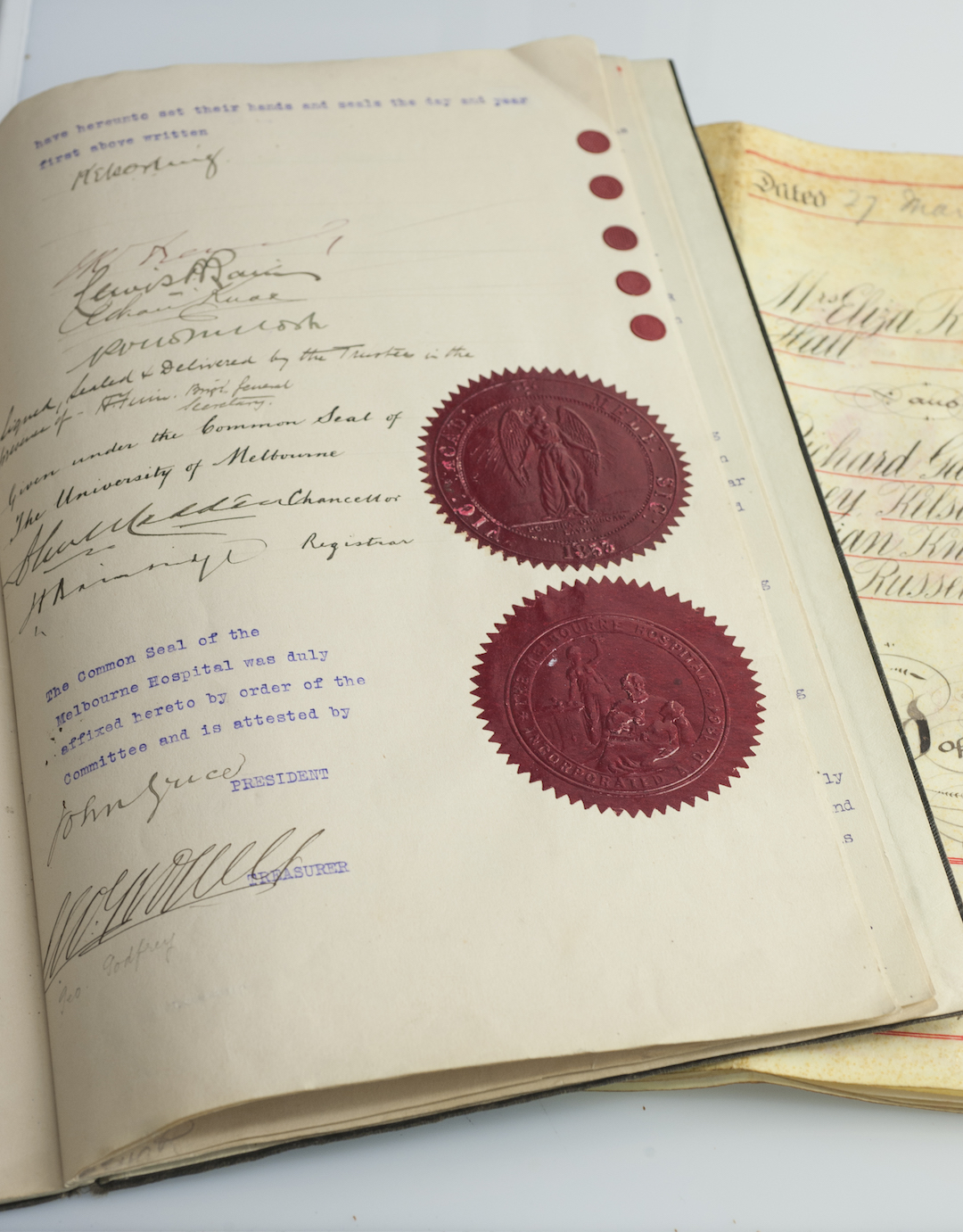Allocating funds in a unique way
As the secretary and sole employee of the Walter and Eliza Hall Trust, Helen Cook is charged with the task of allocating funds according to the wishes of a spectacularly generous woman who died a century ago.
Mostly the grants are dispersed in much the same way as Eliza Hall and her husband Walter practiced their philanthropy during their lifetimes. Without fanfare, modest but desperately needed sums of money are distributed widely and efficiently to individuals and families in urgent need. All up, the trust has given away more than $135 million over the past 100 years.
“We’re unique because we can respond to need very quickly,” says Cook. “Our bread-and-butter work is the small grants program. We give up to 400 grants every year, and they vary from $100 to $10,000. It might be the payment of an electricity bill, or the purchase of a wheel chair.
The trust has been able to continue and expand it work with the assistance of funds from the Vincent Fairfax Family Foundation, the late Sir Vincent having served as a trustee of the Hall legacy for over 40 years. And from 1988 it received donations from the late Dr Arthur and Judy Lennox.
A monumental product of its endowments
Despite the trust’s focus on grassroots philanthropy, by far the most famous and monumental product of its endowments is the Walter and Eliza Hall Institute of Medical Research. The story of how a world-class medical research facility in Melbourne came to be spawned by the Sydney based trust goes back to its very foundations.
Walter Hall was a self-made man who had arrived in Australia from England in 1852, aged 21, with just a small sum of money in his pocket. When he died in 1911, aged 80, he had built a fortune out of gold mining, pastoral investments and the legendary Cobb & Co horse drawn coach lines.
In 1912, the year after Walter’s death, and with her own health failing, Eliza Hall established the charitable trust in their names with a £1 million.
Cook suspects much of her motivation was to inspire a spirit of philanthropy that other wealthy families and individuals might emulate. Her objective was simple: to alleviate human suffering.
The notion of achieving that end through medical research really belongs to Melbourne trustee was Richard Gardiner Casey, a longtime friend and business associate of the Halls. It was his vision, together with Harry Allen, that brought about the collaboration of the fledgling trust, the University of Melbourne and the Melbourne Hospital (later the Royal Melbourne Hospital) to establish the Walter and Eliza Hall Institute of Research in Pathology and Medicine in 1915.
The vision for the institute being “the birthplace of discoveries rendering signal service to mankind in the prevention and removal of disease and the mitigation of suffering.”
The notion of achieving that end through medical research really belongs to Melbourne trustee was Richard Gardiner Casey, a longtime friend and business associate of the Halls. It was his vision, together with Harry Allen, that brought about the collaboration of the fledgling trust, the University of Melbourne and the Melbourne Hospital (later the Royal Melbourne Hospital) to establish the Walter and Eliza Hall Institute of Research in Pathology and Medicine in 1915.
The vision for the institute being “the birthplace of discoveries rendering signal service to mankind in the prevention and removal of disease and the mitigation of suffering.”1
The trust has always supported the institute
The institute began with an annual commitment of £2500 pounds. “The trust was the sole benefactor of the institute for the first 10 years,” says Cook. It continued to provide substantial funding for a long time, even as the institute widened its support base, gaining substantial funds from government and other donors.
“The trust has always supported the institute, every year,” Ms Cook says, though in some periods the amount has been a token figure. Nonetheless, in its first 100 years, it gave (in 2014 dollar terms) over $10 million to the institute.
“Then in 2011 we started to rebuild the relationship, largely because we could afford to,” she explains. This was thanks to the Lennox bequest. The fund in their name is earmarked for researching the causes and cures for disease resulting in physical disabilities.
This has been used to purchase equipment for the institute, and to underwrite a $1 million centenary gift payable over the next five years. Half of that money will go to support research into multiple sclerosis.
She likes the characterisation of that relationship as expressed by the present chairman of the Walter and Eliza Hall Trust, Mr John Chatterton. “The child has far outgrown its parent,” he reflected, “but like any parent the trust is very proud of its offspring and its great achievements”, and furthermore, “the desire to retain the thread of attachment remains strong today.”
A part of the institute’s history
“We’re very proud to continue to be part of the institute’s story,” says Helen Cook. “We share the same historical links, the same name, we are both products of an extraordinary legacy. I think there will always be that relationship.”
1 Burnet F. Walter and Eliza Hall Institute 1915-1965 Melbourne University Press, Melbourne 1971 p11




